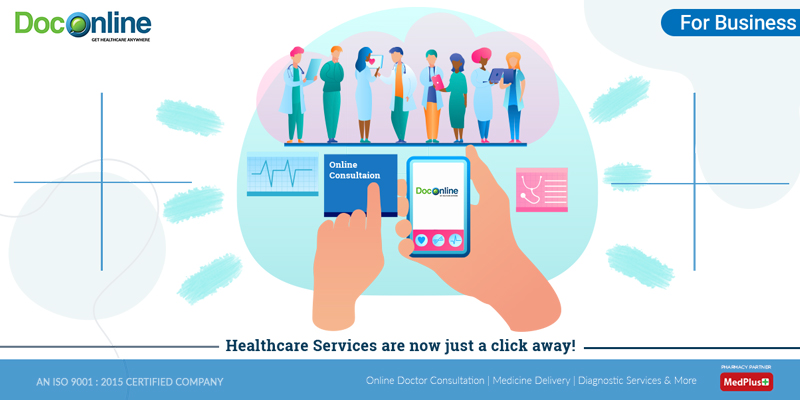Discover the Perks of Subscription Based Healthcare for Affordable Medical Care
Discover the Perks of Subscription Based Healthcare for Affordable Medical Care
Blog Article
Comprehending the Cost-Effectiveness of Subscription-Based Medical Care Models
As the health care landscape progresses, subscription-based designs emerge as a compelling alternative, guaranteeing to redefine exactly how individuals handle medical expenses. Assessing these models' cost-effectiveness necessitates a nuanced comparison with traditional insurance, considering both economic effects and person contentment.
Introduction of Subscription-Based Designs
Subscription-based health care models, sometimes described as straight health care or concierge medication, are progressively acquiring attention as a possible remedy to ineffectiveness within conventional healthcare systems. These versions operate the principle of offering patients straight access to doctor with a yearly or monthly cost, bypassing the requirement for traditional insurance policy systems. This arrangement intends to improve patient-provider communications by minimizing administrative worries, which typically hinder tailored and prompt care.
At the core of subscription-based models is the focus on an extra tailored client experience. Patients profit from boosted access to their medical professionals, commonly including next-day or same-day appointments, prolonged appointment times, and direct interaction channels such as phone or video telephone calls. This model promotes an aggressive method to medical care, where patients and carriers can collaboratively concentrate on preventative care and persistent condition management.

Expense Comparison With Typical Insurance

Among the key economic benefits of registration versions is openness in prices. People pay a foreseeable cost, which can streamline budgeting and economic preparation. In addition, these versions commonly remove co-pays and deductibles for protected solutions, lowering out-of-pocket investing. Alternatively, standard insurance policy might be a lot more beneficial for individuals requiring specialized care or costly therapies not covered under a membership design, as they benefit from the wider protection network and cost-sharing devices.
Nevertheless, cost-effectiveness is context-dependent. While registration designs might use savings for those mostly needing key care, people with chronic conditions or specialized medical care requirements could discover typical insurance coverage extra extensive. Consequently, assessing details healthcare demands and potential usage is critical in identifying one of the most cost-effective choice for people.
Influence On Client Contentment
Patient satisfaction within subscription-based medical care versions usually mirrors a considerable enhancement over traditional insurance systems. Unlike typical systems, where people may experience delays in receiving treatment, subscription-based designs guarantee more timely and straight interactions with healthcare carriers.
Additionally, the transparency in prices connected with subscription-based health care reduces the usual irritations associated to unexpected costs and complicated payment procedures seen in traditional insurance policy (subscription based healthcare). Clients appreciate understanding the exact economic commitment upfront, bring about enhanced trust fund and confidence in their medical care administration
Additionally, the emphasis on preventative care and wellness in membership models adds to enhanced wellness outcomes, better improving individual fulfillment. By focusing on ongoing health care rather than episodic treatment, patients experience a more constant and all natural healthcare journey.
In addition, the enhanced provider-patient connection cultivated in these versions, characterized by even more time invested per patient and customized focus, plays a crucial function in raising person satisfaction levels, as individuals really feel truly cared for and understood.
Supplier Viewpoints and Experiences
From the service provider's perspective, subscription-based health care versions supply a transformative strategy to delivering medical services. These models emphasize a preventative and proactive health care technique, enabling suppliers to concentrate on detailed person treatment without the restrictions of standard fee-for-service plans (subscription based healthcare). This change in focus typically leads to improved client outcomes and increased provider satisfaction, as healthcare specialists can allot even more time and resources to client interaction and personalized care strategies
Additionally, membership models facilitate foreseeable profits streams, which improve financial security for medical care suppliers. This predictability permits enhanced resource preparation and allocation, contributing to a more efficient medical care shipment system. Companies can purchase team more helpful hints technology, training, and framework renovations, thus boosting the high quality of treatment provided.
Nevertheless, the change to subscription-based versions is not without challenges. Despite these obstacles, lots of carriers find that the benefits of enhanced client communication and structured procedures exceed the initial challenges, making subscription-based models an appealing choice.
Future Leads and Obstacles

A key difficulty is regulative conformity, as registration designs must stick to developing healthcare plans and insurance coverage requirements. This demands constant adjustment and advancement to guarantee placement with legal criteria. Furthermore, integrating these designs into existing medical care infrastructures can be intricate, needing substantial investments in modern technology and training.
There is likewise the possible danger of developing inequities in medical care access, as registration models may prefer those who can afford them, leaving susceptible populaces underserved. Addressing this needs thoughtful factor to YOURURL.com consider of pricing methods and subsidy systems to make certain inclusivity.
Conclusion
Subscription-based health care designs provide a feasible option to standard insurance policy by supplying economic predictability and openness, specifically profiting people with chronic conditions or frequent healthcare needs. The cost-effectiveness of these models is contingent upon individual healthcare use patterns and conditions.
Subscription-based medical care versions, often referred to as direct main care or attendant medication, are progressively getting interest as a potential solution to inadequacies within typical medical care systems. Unlike standard systems, where clients might experience hold-ups in getting care, subscription-based models make certain even more prompt and direct communications with medical care suppliers.
These designs emphasize a preventative and proactive health care method, permitting suppliers to concentrate on comprehensive client care without the restraints of conventional fee-for-service arrangements. As these versions continue to obtain traction, they supply the prospective to revolutionize person access to care, simplify service distribution, and enhance medical care costs.Subscription-based medical care designs offer a practical choice to conventional insurance policy by providing economic predictability and transparency, specifically benefiting individuals with persistent conditions or regular medical care requirements.
Report this page